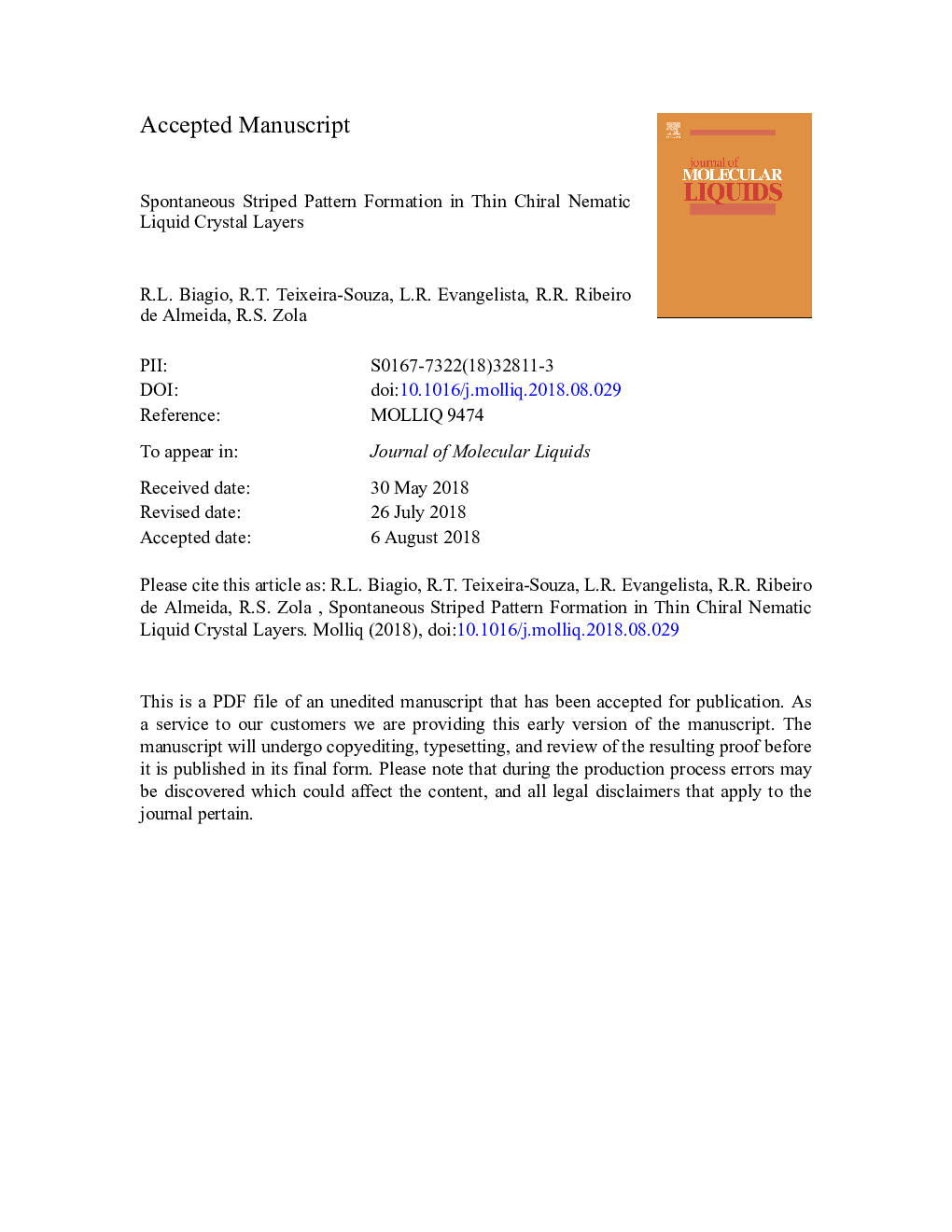| Article ID | Journal | Published Year | Pages | File Type |
|---|---|---|---|---|
| 11006585 | Journal of Molecular Liquids | 2018 | 29 Pages |
Abstract
Periodic modulations in chiral nematic liquid crystals (CLCs) are used in several optical and photonic devices. A remarkable way of fabricating and controlling such patterns is in a thin wetting layer that grows as temperature is decreased. Here, we study this stripe formation process experimentally and by means of Monte Carlo simulations. We report on samples of CLCs that present, after the wetting transition, a stripe/fringe formation occurring either through a nucleation process or homogeneously across the cell. These patterns depend on the ratio of the pitch to thickness of the layer, elastic anisotropy, and anchoring strength. Although such process is well documented for CLCs under applied field, we show here that similar textural transitions occur in thin layers mediated by the weak anchoring at the CLC-isotropic interface; it happens for values of pitch to thickness ratio much smaller than the ones reported in field driven situation. The Monte Carlo method takes action in simulating the experimentally observed textures by using a pairwise additive potential model for CLCs. A qualitative comparison with the experimental phenomena is possible to be made in which both the stripes formation and their behavior agree with the experiments.
Related Topics
Physical Sciences and Engineering
Chemistry
Physical and Theoretical Chemistry
Authors
R.L. Biagio, R.T. de Souza, L.R. Evangelista, R.R. Ribeiro de Almeida, R.S. Zola,
